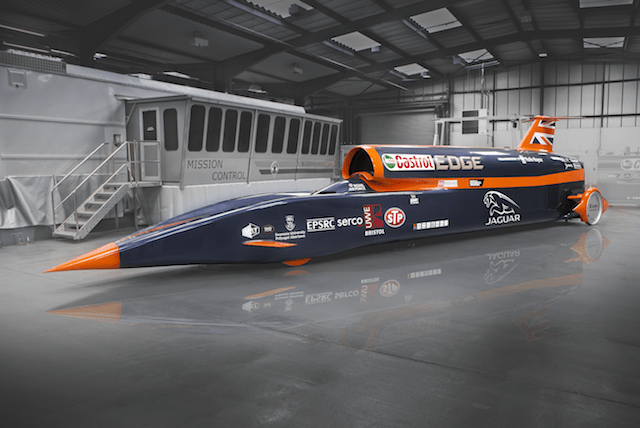The jet-and-rocket powered car is due to make its first test runs in a matter of months and tight packaging within the design means that heat soak is a constant concern.
One of the more unusual facets of Bloodhound is the rocket motor’s fuel pump, which is driven by a 550bhp supercharged Jaguar V8. This sits next to the tank of high-test peroxide (HTP) used to feed the rocket. The consequences of putting too much heat into this 1,000-litre container of highly volatile rocket fuel are potentially explosive, so temperature control is a major issue.

To reduce heat transfer, the V8’s exhaust pipes were coated using Zircotec’s ThermoHold material. This was applied using a plasma spray technique, where an electrically generated plasma is used to heat particles of a zirconia-based material to extremely high temperatures (circa 10,000°C), before it’s shot towards the surface at around twice the speed of sound.
The concept itself isn’t new, but more recently Zircotec has developed a technique for applying the same material to composite surfaces.
One example of this comes with a load-bearing rib that sits on the upper part of the rear structure, just beside the after burner petal of the jet engine.
CLICK HERE TO ACCESS ALL OF THE ENGINEER'S BLOODHOUND SSC COVERAGE
“We weren’t able to use aluminium because of the temperatures involved. In theory, a machined titanium part was an option, but that would have been extremely expensive and heavier than we’d have liked,” explained George Morris, senior composite design engineer for Bloodhound SSC. “Using composites provided the strength we needed, but there’s no way we could have done that without the ceramic coating to control the temperature.”
Elsewhere on the car, the front brake discs can reach more than 600°C, but thanks to the thermal barrier coating the team was able to package a major carbon fibre structural component less than an inch away from their surface.
“At 1,000 mph the air pressure alone on that structure equates to about 18 tons. We just can’t risk any degradation in performance by taking the material above its glass transition temperature,” concluded Morris.




Red Bull makes hydrogen fuel cell play with AVL
Formula 1 is an anachronistic anomaly where its only cutting edge is in engine development. The rules prohibit any real innovation and there would be...